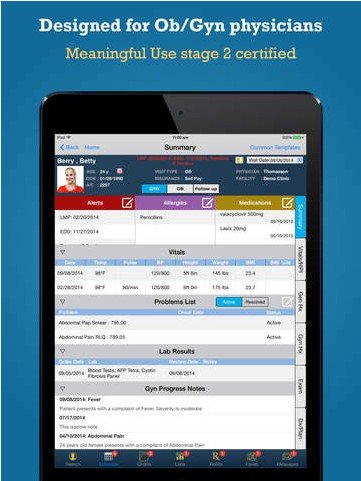To develop an iOS app for nAble Ob/Gyn EMR, tailored for physicians and nurses, here’s a structured approach to building the application.
App Features:
User Profiles: Separate logins for physicians, nurses, and admins. Role-based access control to ensure data privacy and compliance.
Workflows:
Obstetrics (Ob): Manage pregnancy-related visits, prenatal checklists, and delivery planning.
Gynecology (Gyn): Track Gyn-specific visits like PAP tests, menstrual health, and screenings.
Follow-Up: Capture details for follow-up visits, review prior diagnoses, and update treatments.
Patient Management: Quick access to patient demographics, medical history, and ongoing treatments. Real-time updates for vitals, HPI (History of Present Illness), and ROS (Review of Systems).
Physician Orders: Streamlined lab and radiology test ordering. Attach additional notes or special instructions for the lab/radiology team.
Treatment Plans: Prescriptions: Easy prescription management with drug interactions and dosage calculators. Diagnosis: ICD-10 code integration for standardized diagnoses.
Analytics & Reporting: Dashboards for patient metrics, trends, and compliance tracking. Summary reports for lab results and follow-up outcomes.
Security & Compliance: HIPAA compliance for secure handling of patient data. Encryption for data storage and transmission.
Technology Stack:
Programming Language: Swift (native iOS development).
UI Framework: SwiftUI (for modern and clean interface) or UIKit.
Database: CoreData or CloudKit for local storage; optional Firebase for cloud sync.
APIs: FHIR (Fast Healthcare Interoperability Resources) for healthcare data standards. Integration with external systems for lab and radiology orders (e.g., HL7 interfaces).
Key Modules:
Authentication: Secure login with multi-factor authentication. Support for biometric authentication (Face ID/Touch ID).
Patient Workflows:
Obstetrics Workflow: Prenatal history, trimester-specific notes, and fetal monitoring.
Gynecology Workflow: Menstrual tracking, infertility assessments, and menopause care.
Follow-Up Workflow: Quick updates to vitals, progress notes, and treatment adjustments.
Order Management: Create, view, and manage orders for labs and imaging. Notifications for completed orders or results.
Vitals & Documentation: Graphical representation of vitals and trends. Templates for SOAP notes (Subjective, Objective, Assessment, Plan).
Settings & Configurations: Specialty-specific templates for faster documentation. Customizable ROS and HPI fields.
Design Workflow:
Prototype: Use tools like Figma or Sketch to design user-friendly interfaces. Focus on intuitive navigation for quick adoption by healthcare providers.
Development:
Frontend: Build screens with SwiftUI or UIKit.
Backend: Implement APIs for data synchronization with healthcare systems.
Database: Structure models for patient records, visit notes, and orders.
Testing: Simulate workflows for Ob, Gyn, and Follow-Up scenarios. Test for compliance with data security and privacy standards. Ensure performance is smooth on iOS devices (iPhone, iPad).
Deployment: Prepare the app for App Store submission. Ensure all required App Store guidelines for healthcare apps are met.
